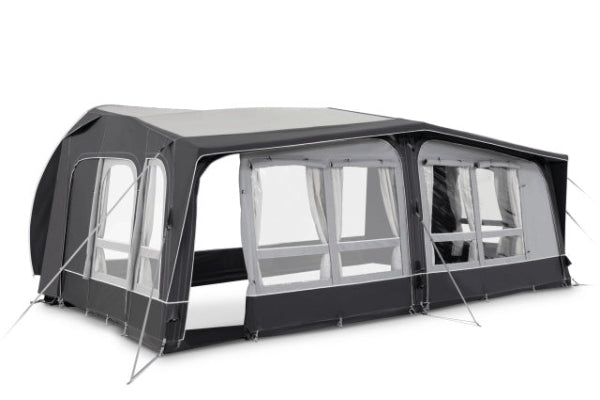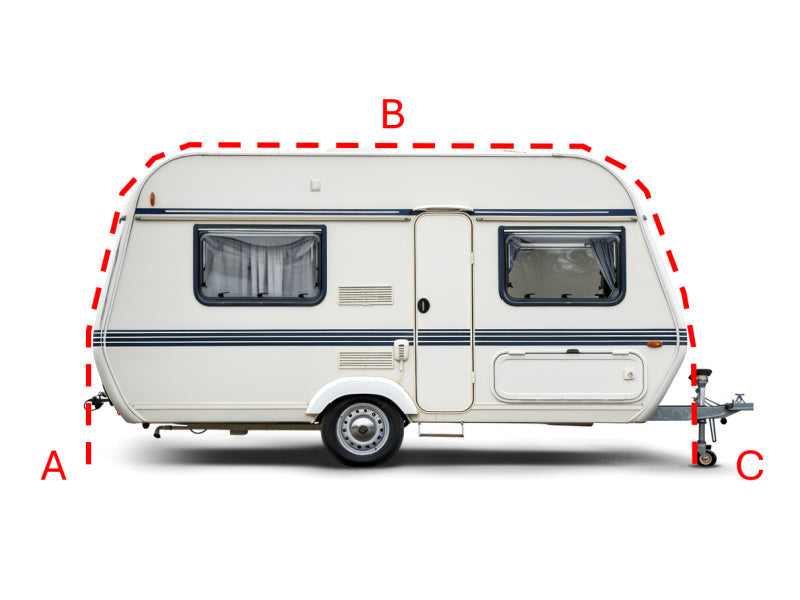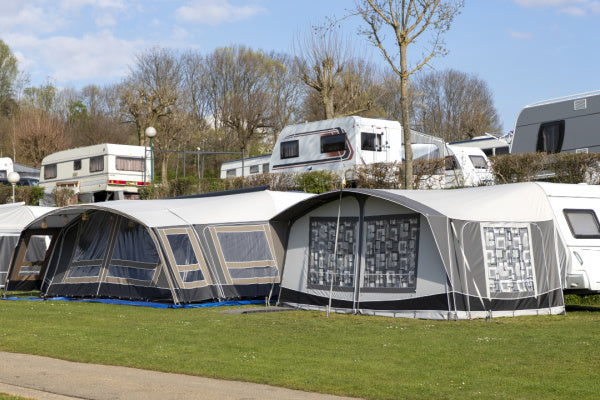How To Stop a Caravan Awning Flapping: Easy Tips
Tired of your caravan awning doing its best impression of a flag in a hurricane? The solution is simple: proper tension, anti-flap kits, or DIY fixes like tie-downs and guy ropes will keep your awning secure. Say goodbye to that maddening flap-flap sound and hello to peaceful camping adventures!
Preventing Awning Flapping
Nothing ruins a peaceful evening at the campsite quite like the constant flap-flap-flap of an unsecured caravan awning. Beyond the irritating noise, loose awnings can suffer damage or even break free in strong winds. Getting this right isn't just about comfort - it's about protecting your camping investment.

Let's dive into proven methods that actually work to keep caravan awnings stable and silent.
Tightening Guylines and Pegs
Most awning problems stem from poor setup. Think of guylines and pegs as the foundation of your outdoor living space. Without proper tension, even the most expensive awning will dance in the slightest breeze.
The secret lies in creating balanced tension throughout the entire structure. Much like tuning a guitar, each element needs the right amount of pressure - not too tight, not too loose.
Using Extra Pegs and Guy Lines
Storm pegs make a world of difference in challenging conditions. These beefier versions dig deeper and hold stronger than standard pegs, especially in soft or loose ground.
Strategic placement matters more than sheer numbers. Focus on the corners and stress points where wind typically catches the fabric. Adding extra pegs at these crucial spots provides significantly more stability than randomly placing dozens around the perimeter.
For maximum holding power, drive pegs into the ground at a 45-degree angle, pointing away from the awning. This creates resistance against both upward and outward forces.
The type of ground affects peg performance dramatically. Sandy soil needs longer pegs, while rocky ground might require specialized options. Keep a variety of peg types in your kit to handle different terrain.
Adjusting Guy Line Tension
Guy lines need regular attention throughout your stay. Changes in temperature and humidity affect fabric tension - what's perfect in the morning might be saggy by afternoon.
Master the art of balanced tension. Start from the corners and work towards the centre, making small adjustments rather than dramatic ones. This prevents creating weak spots or overstressed areas.
Modern tensioners and runners make adjustments surprisingly simple. These small devices allow quick tension tweaks without having to retie knots or reset pegs.
Remember that guy lines shouldn't sing in the wind - if they're making noise, they're probably too tight. Aim for firm but not drum-tight tension.

Using Windbreaks
Windbreaks transform a blustery pitch into a sheltered haven. They act as your first line of defence against gusty conditions that would otherwise pummel your awning.
Smart positioning turns these simple barriers into highly effective wind management tools. The key lies in understanding wind patterns and using this knowledge to your advantage.
Positioning Windbreaks Effectively
Forget about creating an impenetrable wall - that's actually counterproductive. The goal is to redirect and diffuse wind flow, not block it entirely.
Set windbreaks at a 45-degree angle to the prevailing wind direction. This deflects the force gradually rather than creating turbulence. Picture how water flows around rocks in a stream - you want smooth diversions rather than chaotic splashing.
Creating a sheltered zone requires thinking in three dimensions. Leave small gaps at the bottom of windbreaks to prevent wind from tunnelling underneath and causing more problems than it solves.
Multiple windbreaks can create an effective compound barrier. Overlap them slightly to prevent wind from funnelling through gaps while maintaining healthy air circulation.
Reducing Awning Area
Sometimes less really is more. Reducing the exposed surface area gives the wind less fabric to grab onto.
During particularly blustery conditions, partially rolling in the awning can make a massive difference. Even a small reduction in size dramatically decreases wind resistance.
Consider removing side panels when they're not needed. Each panel acts like a sail, catching wind and increasing strain on the entire structure. Only keep up what's necessary for your current needs.

For consistently windy locations, investing in a smaller awning might prove smarter than fighting with a larger one. The initial cost saves money in the long run by preventing damage and extending equipment life.
Here's a crucial tip: watch the weather forecast. Taking preventive action before conditions deteriorate saves time and prevents damage. It's much easier to adjust your setup in calm conditions than during a rising storm.
Regular maintenance plays a vital role in preventing flapping issues. Check for wear and tear, especially around stress points and seams. Replace damaged guy lines promptly - they're a cheap fix compared to repairing torn fabric.
Keep spare parts in your camping kit. Having extra pegs, guy lines, and tensioners means you can respond quickly when conditions change or equipment fails.
The effort invested in proper setup pays dividends in peace of mind. A stable, quiet awning transforms your camping experience from stressful to serene. Take time to master these techniques, and you'll enjoy many peaceful evenings under your well-secured awning.
Remember that practice makes perfect. Each time you set up your awning, you'll get better at spotting potential issues before they become problems. Keep adjusting and refining your technique based on weather conditions and site characteristics.
The goal isn't just to stop flapping - it's to create a comfortable, secure outdoor living space that enhances your camping adventures. With these methods in your toolkit, you're well-equipped to handle whatever weather comes your way.





Leave a comment